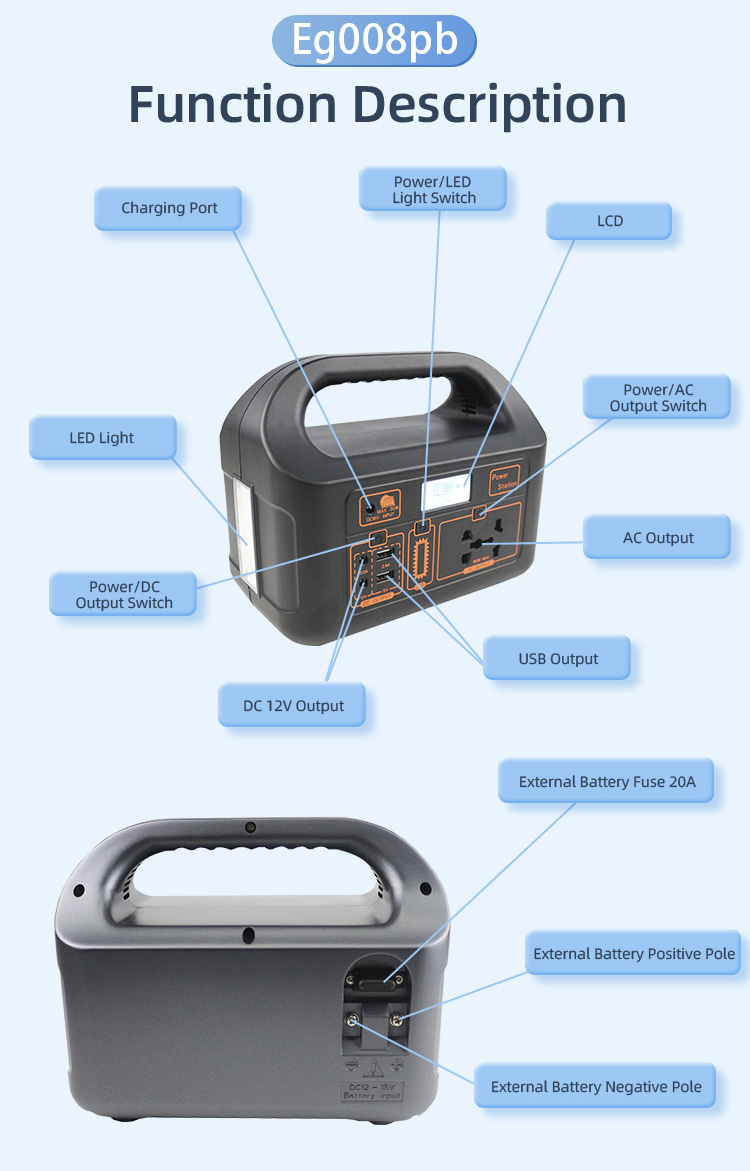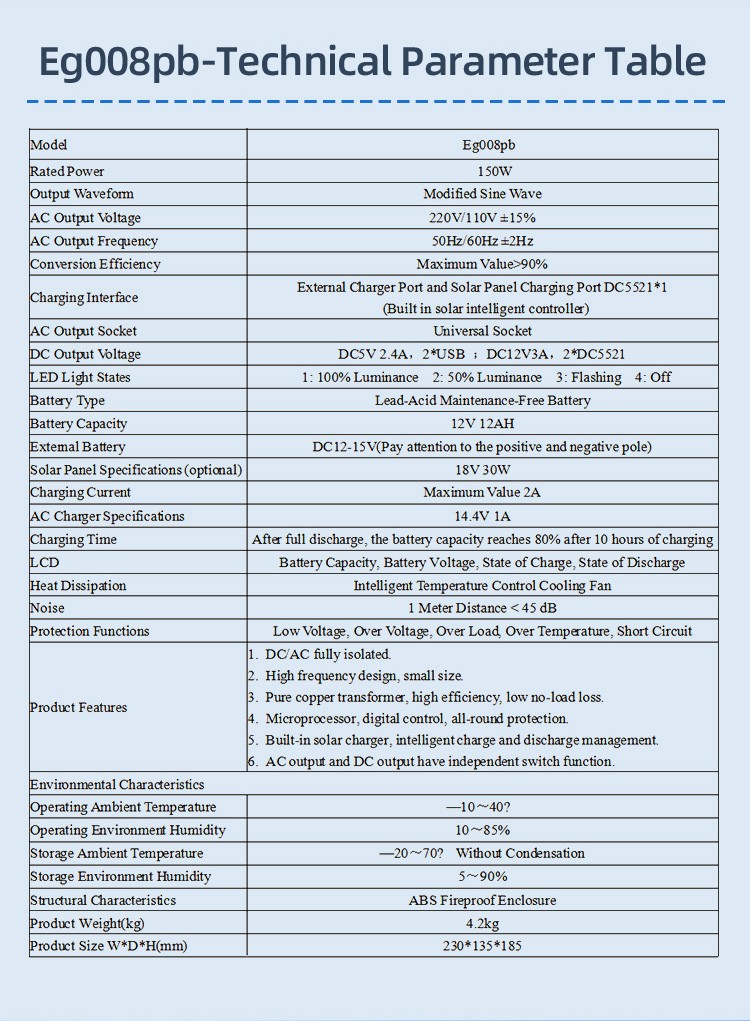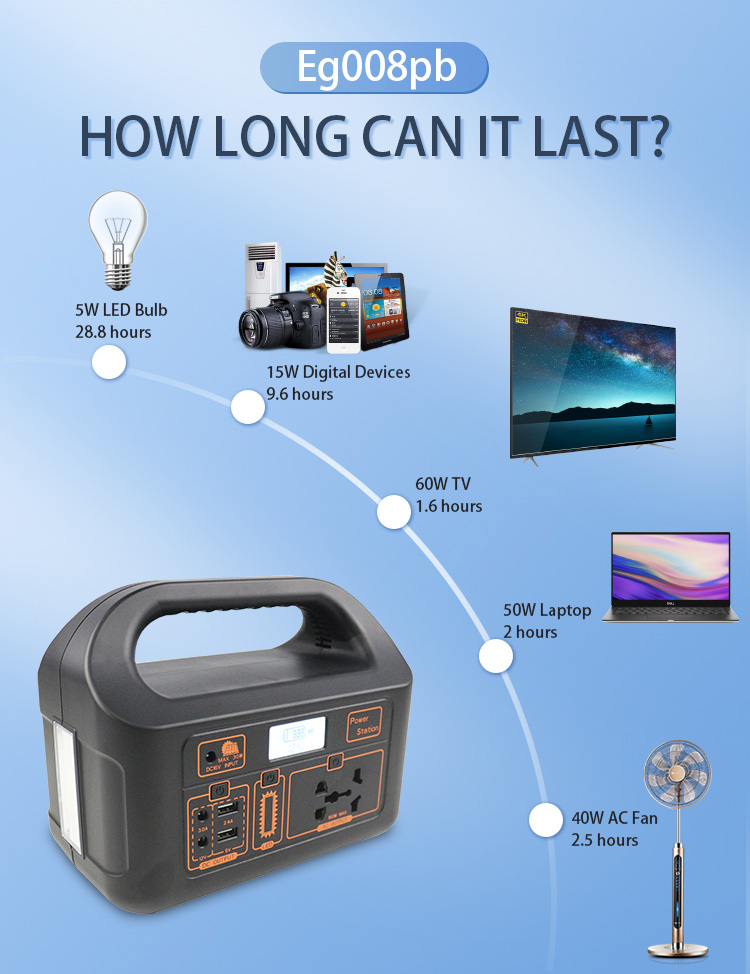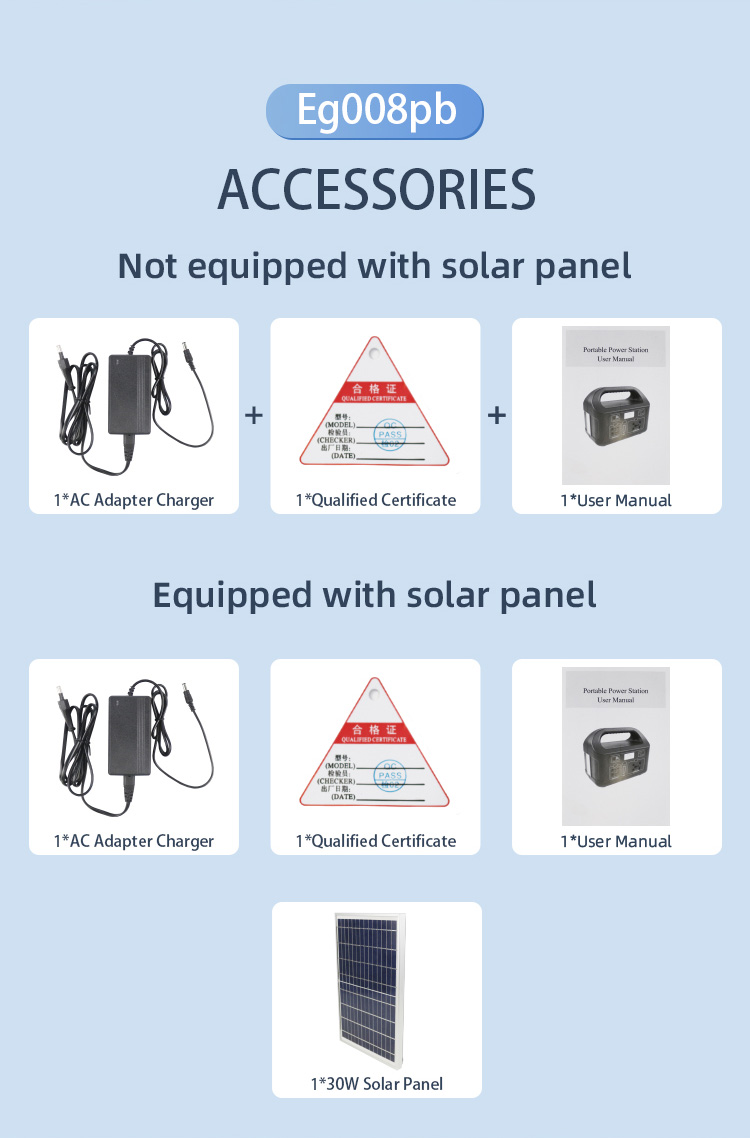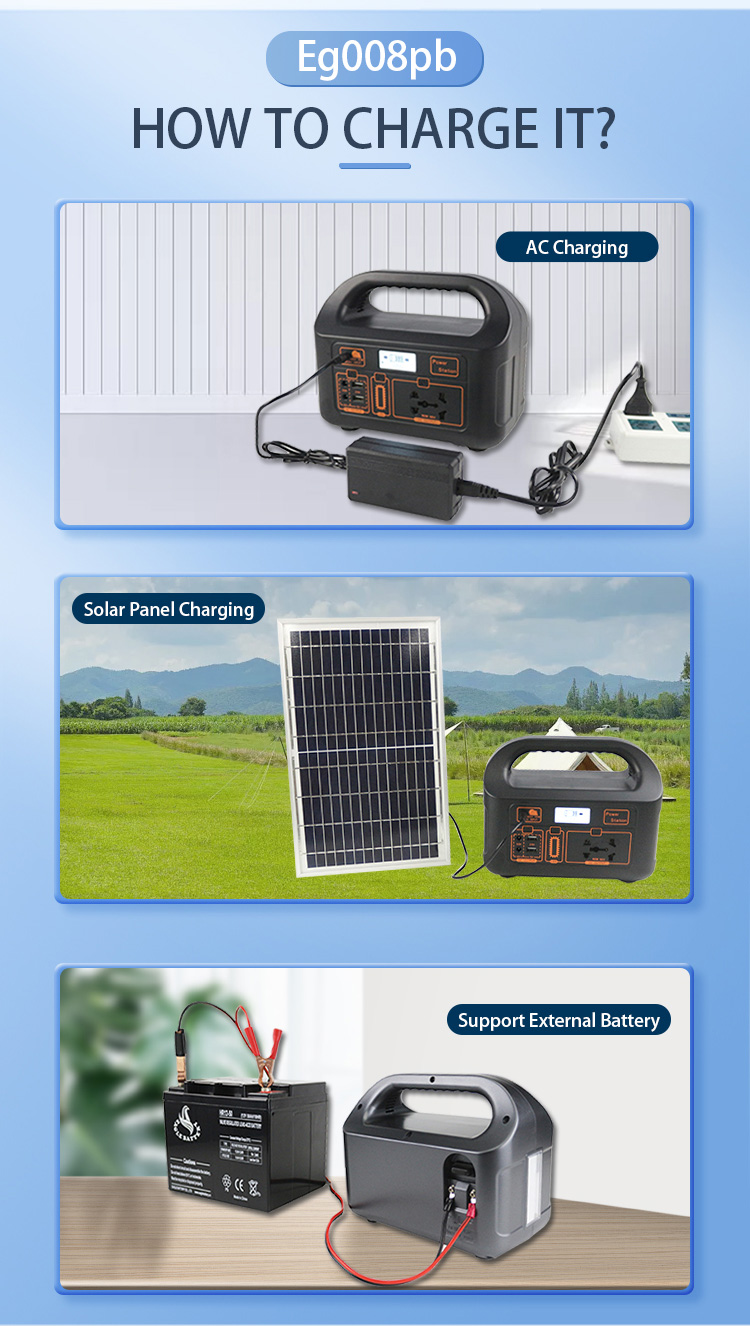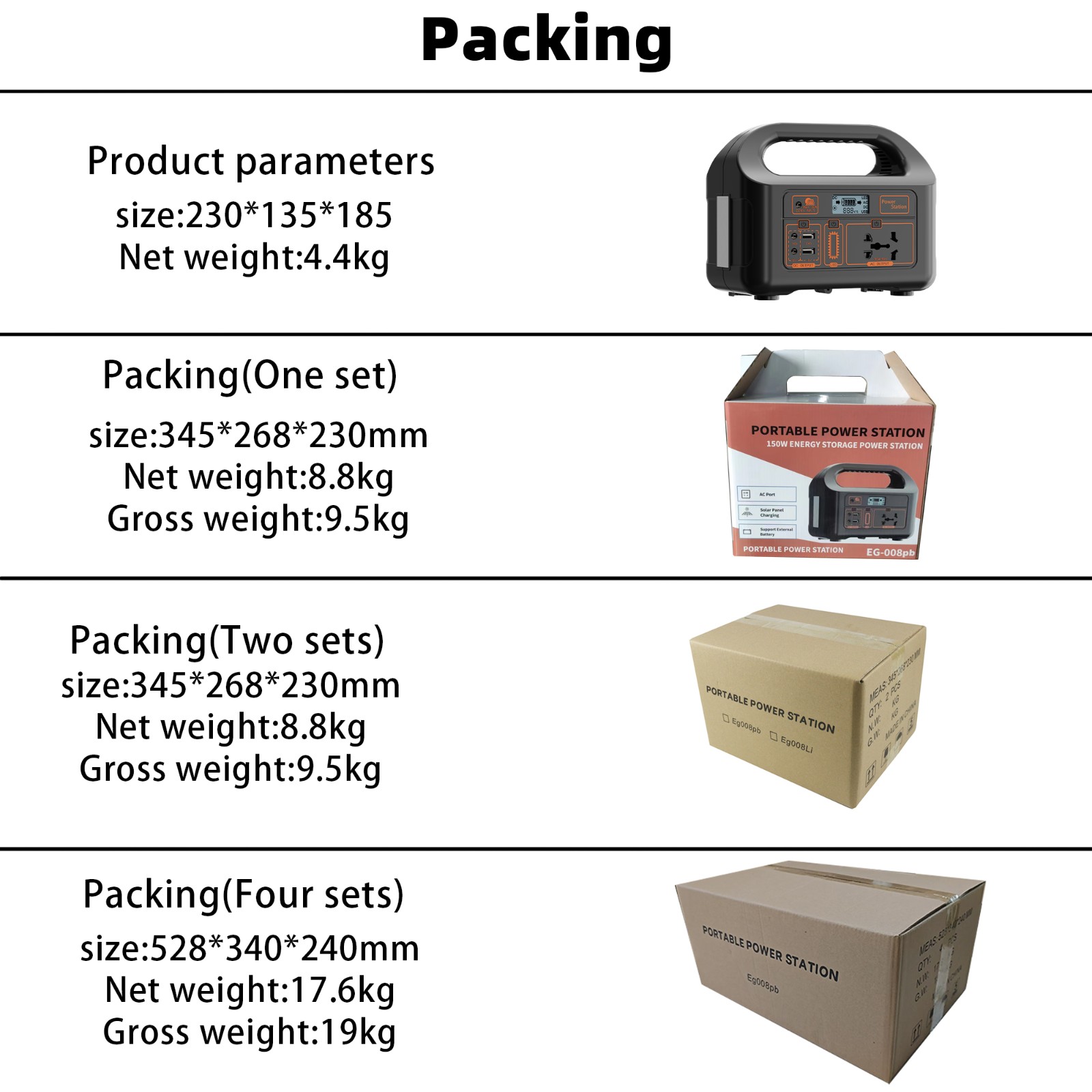Specification matching
· Voltage: The output voltage of the charger must be consistent with the rated charging voltage of the portable power station. For example, a common 12V portable power station requires a charger with a 12V output; if the charger voltage is too high, it may damage the portable power station or even cause a safety accident, and if the voltage is too low, it cannot be charged normally.
· Current: The output current of the charger should match the charging current requirement of the portable power station. Generally speaking, the output current of the charger can be equal to or slightly greater than the rated charging current of the portable power station. For example, if the rated charging current of the portable power station is 2A, a 2A or 2.5A charger can be selected, which can ensure charging efficiency without damaging the battery due to excessive current. But do not choose a charger with too large current, such as a 10A charger, otherwise it may cause the battery to overheat, shorten the battery life, and even pose a safety hazard.
· Interface type: The charger interface must fully match the charging interface of the portable power station. Common interfaces include DC interface, USB interface, Type-C interface, etc. If the interface does not match, it cannot be connected for charging.
·Charging protocol: If the portable power station supports a specific fast charging protocol, such as PD (Power Delivery), QC (Quick Charge), etc., then choose a charger that supports the corresponding fast charging protocol to achieve fast charging. For example, a certain portable power station supports the PD fast charging protocol. Using a charger that supports the PD protocol can charge more power to the portable power station in a short time.
·Quality and safety
·Certification: Choose a charger that has passed relevant safety certifications, such as 3C certification, UL certification, etc. These certifications indicate that the charger meets safety standards and has certain guarantees in terms of electrical safety, fire prevention, and leakage prevention.
·Protection function: The charger should have overvoltage protection, overcurrent protection, overheating protection, short circuit protection and other functions. When abnormal conditions occur, such as voltage fluctuations, current overload, etc., the charger can automatically stop charging or take protective measures to prevent damage to the portable power station and charger, and avoid safety accidents.
In short, when choosing a charger, you should carefully read the instructions of the portable power station to understand its charging requirements, and then choose a suitable charger based on these requirements to ensure charging safety and efficiency.

